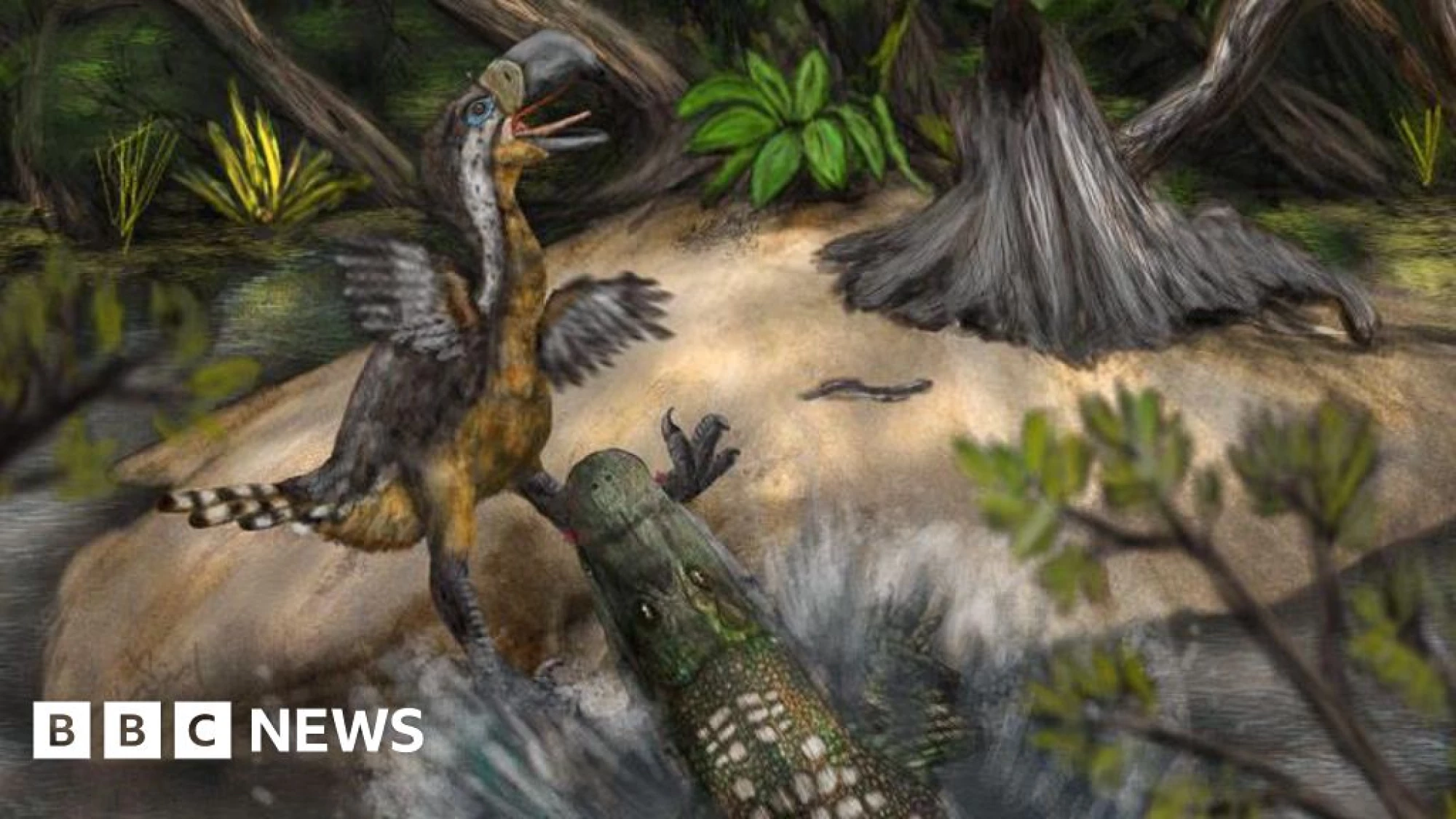Teeth marks suggest 'terror bird' was killed by reptile 13 million years ago

Terror birds could be taller than a human and had powerful legs and hooked, flesh-ripping beaks.
Watch LiveBritish Broadcasting CorporationHomeNewsSportBusinessInnovationCultureArtsTravelEarthAudioVideoLiveHomeNewsIsrael-Gaza WarWar in UkraineUS & CanadaUKUK PoliticsEnglandN. IrelandN. Ireland PoliticsScotlandScotland PoliticsWalesWales PoliticsAfricaAsiaChinaIndiaAustraliaEuropeLatin AmericaMiddle EastIn PicturesBBC InDepthBBC VerifySportBusinessExecutive LoungeTechnology of BusinessFuture of BusinessInnovationTechnologyScience & HealthArtificial IntelligenceAI v the MindCultureFilm & TVMusicArt & DesignStyleBooksEntertainment NewsArtsArts in MotionTravelDestinationsAfricaAntarcticaAsiaAustralia and PacificCaribbean & BermudaCentral AmericaEuropeMiddle EastNorth AmericaSouth AmericaWorld’s TableCulture & ExperiencesAdventuresThe SpeciaListEarthNatural WondersWeather & ScienceClimate SolutionsSustainable BusinessGreen LivingAudioPodcastsRadioAudio FAQsVideoLiveLive NewsLive SportHomeNewsSportBusinessInnovationCultureArtsTravelEarthAudioVideoLiveWeatherNewslettersWatch LiveTeeth marks suggest 'terror bird' was killed by reptile 13 million years ago12 hours agoShareSaveVictoria GillScience correspondent, BBC NewsShareSaveLink et al/Biology LettersThe researchers say the terror bird did not survive the encounter Teeth marks made on the leg bone of a large avian reptile known as a terror bird 13 million years ago suggest an even bigger predator may have killed it, scientists say.
Terror birds were top predators - they could be taller than a human and had powerful legs and hooked, flesh-ripping beaks.
Palaeontologists in Colombia matched teeth marks on the fossilised leg bone of one of these fearsome birds to a caiman, or a crocodile-like reptile.
3D digital scans of the bites allowed the scientists to reconstruct what they believe was a "battle to the death" that the terror bird did not survive.
The new study, published in the journal Biology Letters, compared the size and shape of the teeth marks to the skulls and teeth of crocodile-like predators in museum collections.
https://www.bbc.com/news/articles/cvg8d2j195yo
Rating: 5